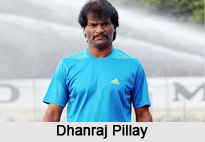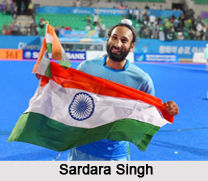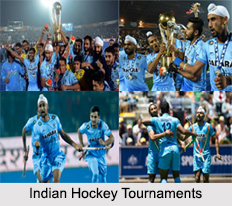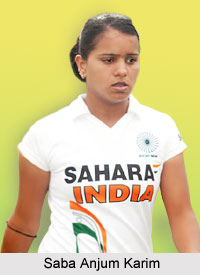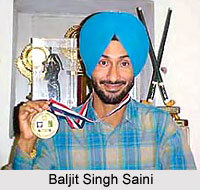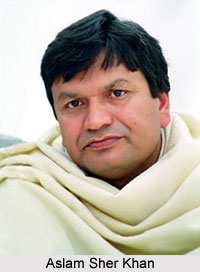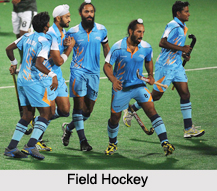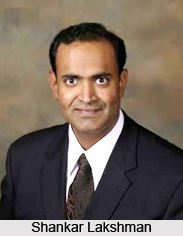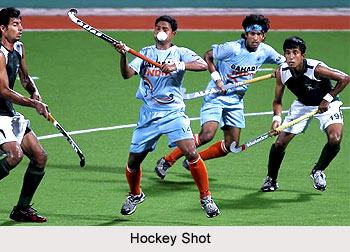 Terms of hockey are essential for the game, as it helps hockey to get a specific identity, and also ensures players to communicate with each other. Here are some of the terms of hockey discussed below:
Terms of hockey are essential for the game, as it helps hockey to get a specific identity, and also ensures players to communicate with each other. Here are some of the terms of hockey discussed below:
Free Hits
Free hits are awarded when offences are committed outside the scoring circles. The ball may be hit or pushed once in any direction by the team offended against. Opponents must move 5 m from the ball when a free hit is awarded, and for attacking free hits within 5 m of the circle all attackers other than the one taking the hit must also be 5 m away. As mentioned above, a 15 m hit is awarded if an attacking player commits a foul forward of that line, or if the ball passes over the backline off an attacker. These hits are taken in line with where the foul was committed (taking a line parallel with the sideline between where the offence was committed, and the ball went out of play). If the attack commits a foul in the circle they are attacking, the defence additionally has the option to take the free hit anywhere in that circle.
Long Corner
A long corner is awarded if the ball goes over the backline after last being touched by a defender. Long corners are played by the attacking team and involve a free hit on the sideline five yards from the corner of the field closest to where the ball went out of play.
Short Corner
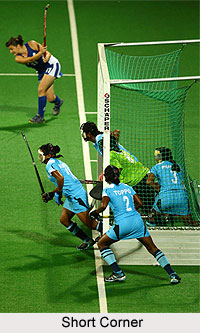 The short or penalty corner is a rather complicated set play that is awarded against a defending team when any offence is committed in the defensive circle, and may be awarded when a deliberate offence is committed in the defending 23 m area, or when the defending team deliberately plays the ball over the back line. Short corners begin with five defenders (including the keeper) arranged along the backline. All other defenders must return to the centre line until the ball is in play. Attacking players begin the play standing outside the scoring circle, except for one attacker who starts the corner by playing the ball from a mark 10 m either side of the goal (the circle has a 14.63 m radius). This player puts the ball into play by pushing or hitting the ball to the other attackers outside the circle; the ball must pass outside the circle before the attackers attempt to get a shot or deflection into the goal. For safety reasons, the first shot of a penalty corner must remain under 460 mm high unless it is flicked.
The short or penalty corner is a rather complicated set play that is awarded against a defending team when any offence is committed in the defensive circle, and may be awarded when a deliberate offence is committed in the defending 23 m area, or when the defending team deliberately plays the ball over the back line. Short corners begin with five defenders (including the keeper) arranged along the backline. All other defenders must return to the centre line until the ball is in play. Attacking players begin the play standing outside the scoring circle, except for one attacker who starts the corner by playing the ball from a mark 10 m either side of the goal (the circle has a 14.63 m radius). This player puts the ball into play by pushing or hitting the ball to the other attackers outside the circle; the ball must pass outside the circle before the attackers attempt to get a shot or deflection into the goal. For safety reasons, the first shot of a penalty corner must remain under 460 mm high unless it is flicked.
Penalty Stroke
A penalty stroke is awarded when defenders commit a deliberate foul in the circle which deprives an attacker of possession or the opportunity to play the ball, when an accidental breach prevents a certain goal, or if defenders repeatedly "break" or start to run from the backline before a penalty corner has started. This penalty pits a single attacker against the goalkeeper, and is taken from a spot 6.4 m out and directly in front of the goal. The goalkeeper must stand with heels on the goal line, and cannot move his feet until the ball is played. On the umpire`s whistle, the striker may take one step and push or flick the ball at the goal, which the goalkeeper attempts to save. The attacker is not permitted to take more than one step, more than one shot, to fake or dummy the shot, or to move towards or interfere with the goalkeeper once the shot is taken. Hitting or dragging the ball is also forbidden. If the shot is saved, play is restarted with a 15 m hit to the defenders; if a goal is scored, play is restarted in the normal way.
Scoring In Field Hockey
The teams` object is to play the ball into their attacking circle and, from there, hit, push or flick the ball into the goal, scoring a point. The team with more goals after two 35-rninute halves wins the game.
Tie Breaker
Conditions for breaking ties are not laid down in the rules of hockey, but many associations will follow the procedure laid down in FIH tournament regulations which mandate 7.5 minutes each way of "golden goal" extra time (i.e. the game ends as soon as one team scores). If, scores are still level, then the game will be decided with penalty strokes- in much the same way that association football penalty shoot outs are conducted.
Other competitions may use alternative means of breaking a tie, for example, an extended period of golden goal extra time with a progressive reduction in the number of players each team can have on the field (usually termed "drop-offs"); if no goal is scored at the end of such extra time periods, again a result would be achieved using penalty strokes
Signals by the Umpires
1. Bully: Make a "bully" movement with both hands.
2. Obstruction: Make a circular movement with one arm in front of the body.
3. Kicks: Slightly raise a leg and touch it with the hand.
4. Off-side: Stand on the line of the decision and raise arm horizontally pointing towards the direction.
5. Goal: Turn, point both arms horizontally towards the centre of the ground.
6. Free-hit push-in: Indicate the direction with one arm raised horizontally, downwards with the other arm.
7. Corner: Point an arm at the corner flag closest to the point where the ball has crossed the back line.
8. 16 yd hit: Extend both arms sideways.
9. Penalty-corner: Point both arms towards the goal.
10. Penalty-stroke: The left arm points to the penalty spot. The right arm points straight up in the air.
11. Dangerous Play or Bad Tempers: Stop play. Make palming indications by raising both hands horizontally, palm downwards in front of the body moving slowly up and down.
12. Time Stopped: Turn towards the other umpire and time-keeper and cross fully extended arms at the wrist above the head.
13. Start/Restart: Raise one arm in the air and await other umpire`s acknowledgement before starting play









